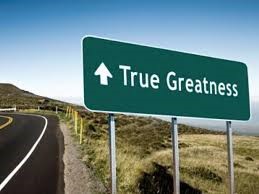 Every leader of a non-profit wants his or her board of directors to be a dynamic force in major gift fundraising. I know you do.
Every leader of a non-profit wants his or her board of directors to be a dynamic force in major gift fundraising. I know you do.
Over the years, Richard and I have sat down with numerous non-profit executives and heard their rants about how bad their boards are. I wonder if any of this sounds familiar to you:
- “I can’t get my board members to solicit donors.”
- “My board won’t come to events and talk to donors about what we do.”
- “None of my board members asks me how they can help introduce their friends to us. Why can’t they open up their contact lists?”
- “Our development committee is foundering. I don’t think they know what they are doing.”
- “I’ve had board members who have been on our board for over 20 years. They are a complete roadblock to change.”
The rants go on and on. When Richard and I hear leaders “go off” on their boards we listen intently, and when they are finished we ask a few questions: “Does the board know you feel this way? Do they understand what you need help with? Have you ever asked them to open up their contact list? Are you giving your board clear direction?”
And if the CEO or ED is honest, they will say “no” to most or all of our questions. It’s not that these leaders are bad at their jobs. It’s that in non-profits today, leaders have this belief and expectation that board members should just know what they are supposed to do and be for the organization.
That is clearly a mistake.
Richard and I have come to the conviction that if you want a dynamic board that boosts the performance of your major gift program, then it’s up to you and the organization to make it happen. In fact, over all the years we have been working with non-profits, we have discovered a number of positive attributes of great non-profits that help their boards be successful at major gifts.
Here are those attributes that you can incorporate at your organization, to help you start down a path with your board that will ultimately lead to major gift success:
- Recruit Strategically — Conduct a SWOT analysis of your current board. Then, with the help of a Board Steering Committee, develop a recruitment plan that addresses areas where your organization needs help. Many organizations are weak on bringing on both people of wealth and those who have access to wealth. This is important to your major gift program. Finally, make sure you have term limits. There are too many boards with members who have been on them too long. Term limits help you continue to bring in people with a fresh perspective and help give the board a jolt of energy.
- Provide solid information / direction / support and training — This is so critical. First, great organizations provide new members with a “New Board Member Fundraising Packet.” This packet of information lets the board member know what your philosophy of fundraising is, explains the economics of fundraising, provides the fundraising strategic plan, gives communication samples, and gives a list of expectations related to major gift fundraising and their participation. With this, you’re providing ongoing direction and training for board members. Too often, non-profits assume board members know what they should do. The truth is they don’t. They are looking for your leadership.
- Communication — Strategic organizations appoint a staff liaison for the board so members know who they can contact if they have a question or concern. That liaison ensures that the organization always follows up with board members. This is one area where I’ve heard board members complain about the organization, “I have given them a bunch of names to follow up with, but I’ve never heard back what happened with the leads I gave them.” You never want that to happen. If you need help from the board, ask for it. Don’t assume the board will know magically know what your expectations are. Tell them. Additionally, always provide updated fundraising reports to let members know where you are and what you are doing. Being proactive will save you a ton of grief down the road. Finally, make sure you never hide bad news from the board, and always celebrate good news with them.
- Inspiration — If you want boards to be great at major gifts and supporting your work, you have to keep inspiring your board about your mission. At every board meeting you need to tell stories of the ongoing need, those you serve and those that support the organization… yes, you need to tell great donor stories. This is important because it’s easy for a board to lose sight of your mission. Your job is to continually break their heart.
If you and your organization can do more work around these four areas, you will see a more active, engaged and inspired board that will be able to help in your major gift success. Don’t wait for the board to act… lead your board toward major gift greatness.
Jeff
PS – If you want to improve your non-profit’s fundraising culture, check out our free White Paper: “Building a Culture of Philanthropy.”




0 Comments